VLSI & Nanoelectronics:
For decades, periodic downscaling of transistors, dictated by Moore’s law, has fueled progress of electronic technologies. In continuation to that, we have arrived at the very edge of conventional scaling process and approaching towards the atomic dimension. Quantum phenomena, short channel effects and the fundamental Boltzmann limit (stemming from statistical distribution of free carriers) have become major hindrances against continued improvement of device and circuit performance. At this critical stage, conventional CMOS based electronics is transitioning to the post-CMOS era. Several materials and devices are being explored to supplement/replace existing counterparts to meet performance/power targets. These emerging entities have unique characteristics including new opportunities and challenges. Due to the immense design complexity, secluded device or circuit centric design is not ideal for emergent technologies. Circuit driven device design (and vice versa) is mandatory to best utilize the potentials of these novel materials/devices. We work on device-circuit co-design with emerging technologies to facilitate low-power, reliable VLSI design.
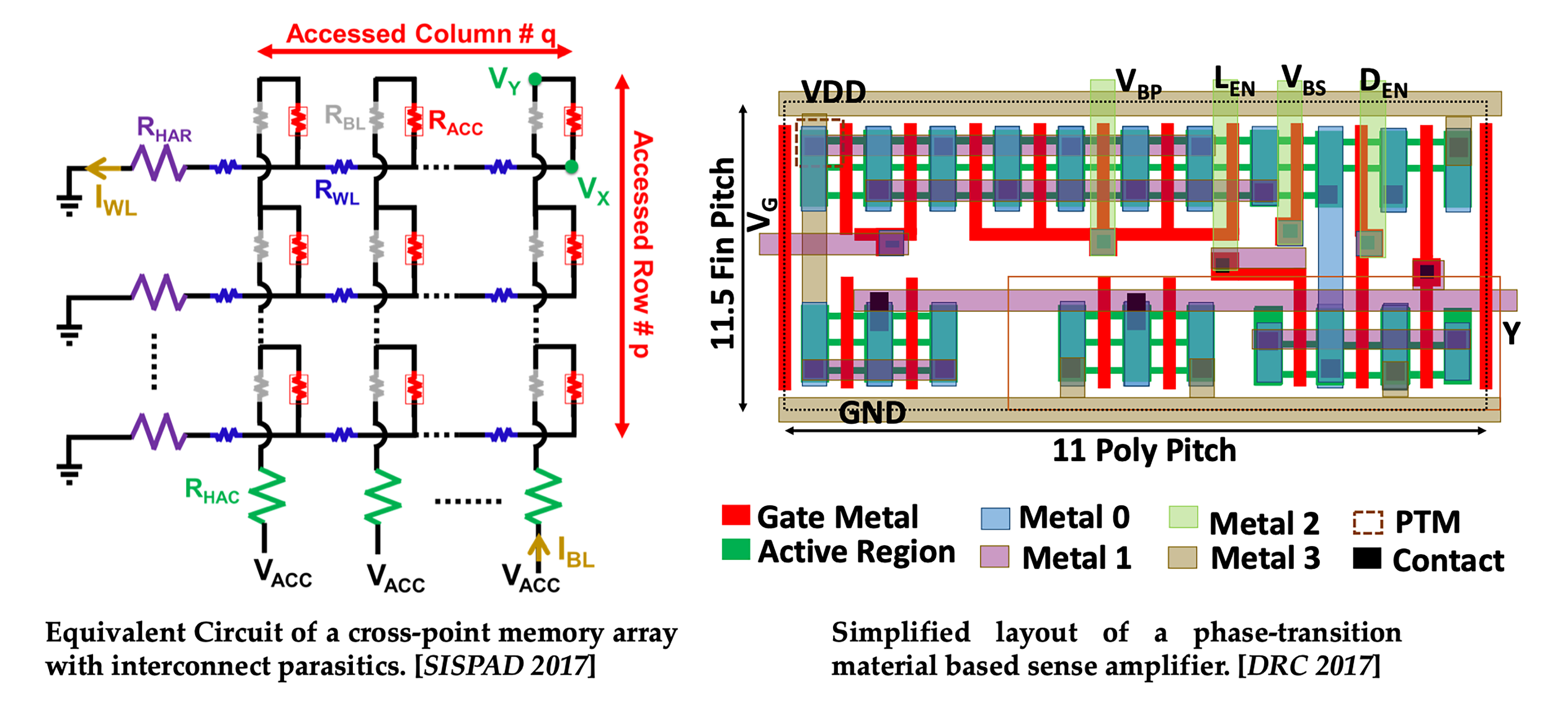
Emerging Memory Devices:
The stupendous increase in the need for data storage for technical and non-technical applications has led to a manifold increase in the need for more reliable and denser memory devices/circuits/arrays. Large scale scientific experiments, space exploration, social media, financial services and interconnected smart devices have been creating data in mind-boggling proportion. Keeping up with the demand, innovation in the memory industry has been strongly accelerated. Non-volatile memory devices have garnered attention due to the increased popularity of portable, wearable, implantable devices and the internet of things. We explore the device/circuit/array level design of emerging memory devices including RRAM, MRAM, PCRAM and ferroelectric memories. We also work on designing and optimizing 3D Cross (X) point memory array with special emphasis on the ‘selector’ design.
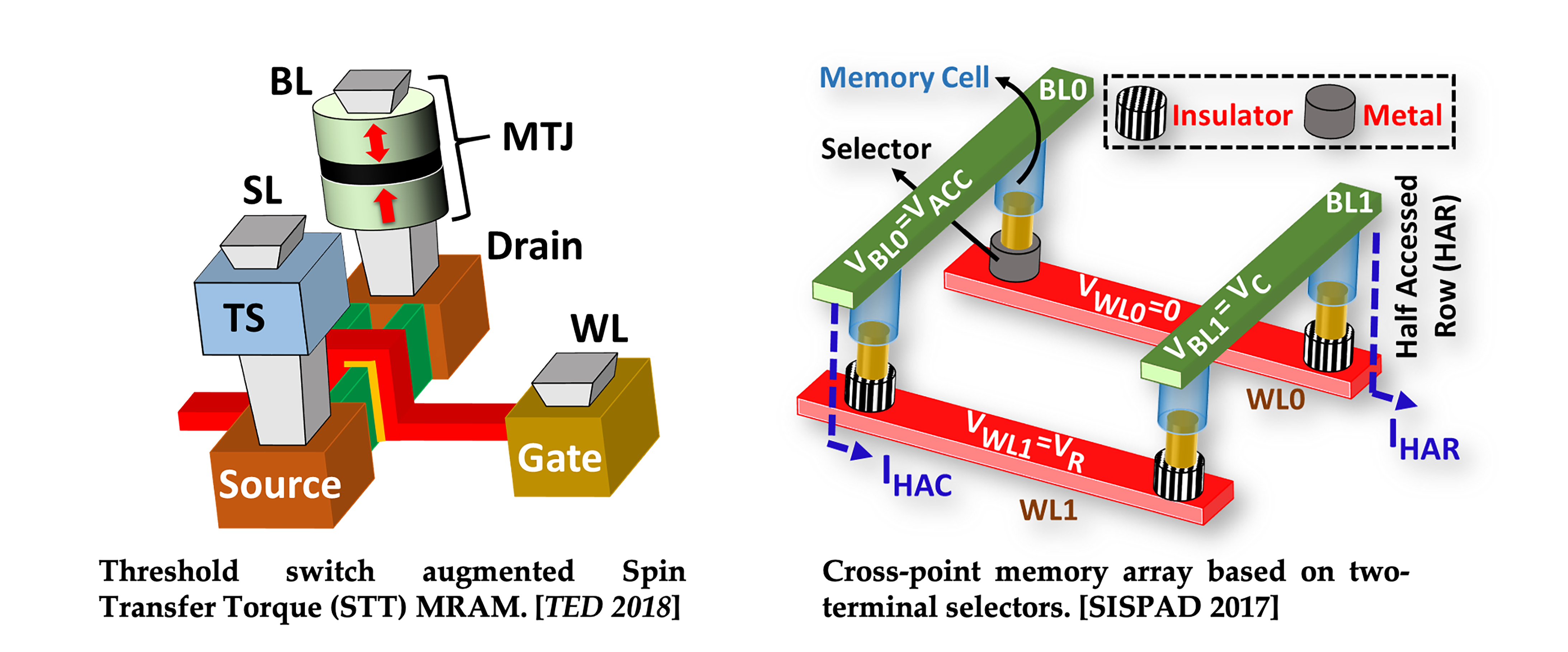
Beyond CMOS Technologies:
The quest for next-generation low power devices has triggered a worldwide search for device designs that can achieve < 60 mV/Dec subthreshold swing (known as Boltzmann limit). While this is physically impossible for a Silicon-based conventional transistor, several new physical phenomena have been shown/proposed to be able to enable such performance. Our group contributes to the exploration and development of novel steep switching transistor technologies. We develop the design methodology for these devices and predict their unique circuit-level signatures. We also develop circuit compatible models for these novel devices to facilitate design exploration in higher levels of abstractions.
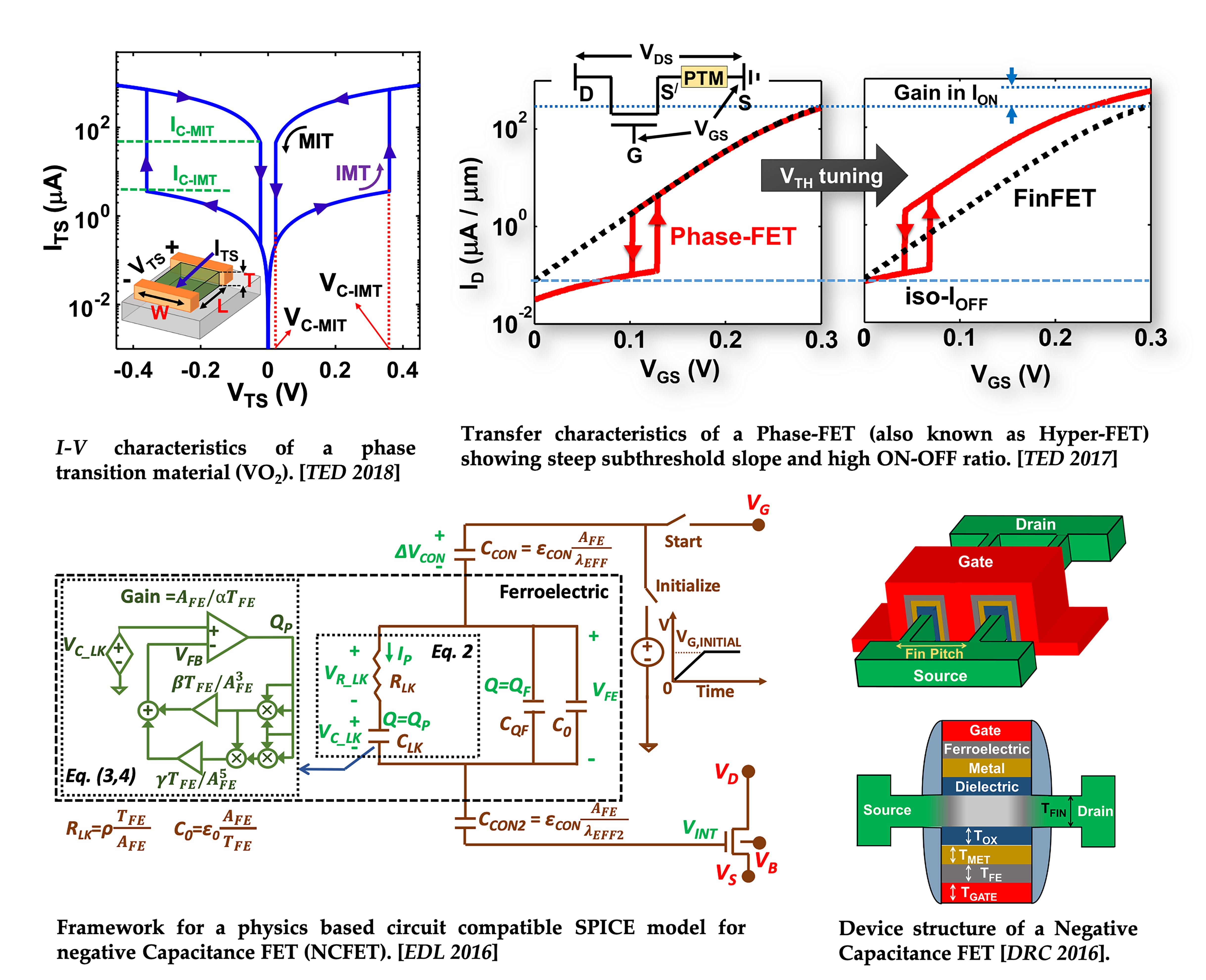
Artificial Intelligence & Neuromorphic Hardware:
Modern digital processors are excellent for cumbersome computations and to follow strenuous algorithms. However, the human brain- a marvelous bio-processor, has the unique ability to learn and evolve. Due to the popularity of applications like adaptive virtual assistants (Apple-Siri, Amazon-Alexa, Samsung-Bixby etc.), pattern matching, image recognition and unsupervised data mining; brain-inspired/neuromorphic computing is garnering huge interest. From the hardware point of view, the basic step to implement an efficient neuromorphic system is to establish a circuit equivalent of neurological primitives (neuron and synapse) and optimize/co-design them for specific applications. Phase transition materials and magnetic tunnel junctions are suitable to provide probabilistic/stochastic oscillations and therefore can be utilized to design spiking neurons. In addition, X-point array of RRAMs and FEFET with multi-domain gate stack can provide the spike time dependent plasticity (STDP), observed in the biological synapse. The multi-domain nature of FEFET can be harnessed to create multi-level weights for designing analog synapse, which is more similar to their biological counterparts. We explore hardware primitives for artificial neurons and synaptic networks to realize power-efficient neuromorphic system hardware.
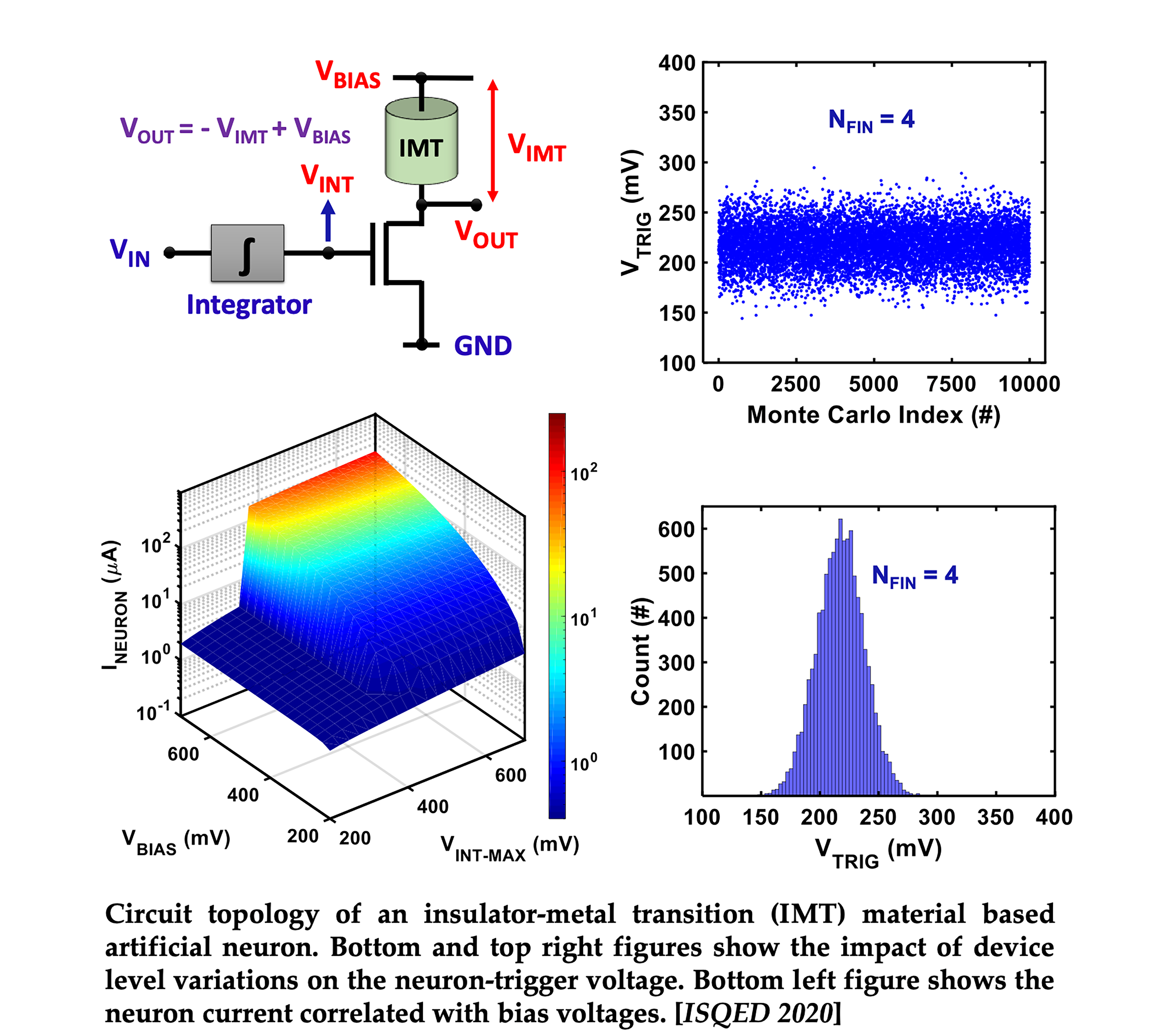
Cryogenic Circuits and Quantum Computing Hardware
Quantum computing is a rapidly evolving field that has the potential to provide a paradigm-shifting impact on our civilization. We work on the design exploration of devices required to develop qubits. Our approach is based on modeling and simulations. In addition to the qubit designs, we also work on quantum and cryogenic circuits to facilitate the overall quantum computing system.
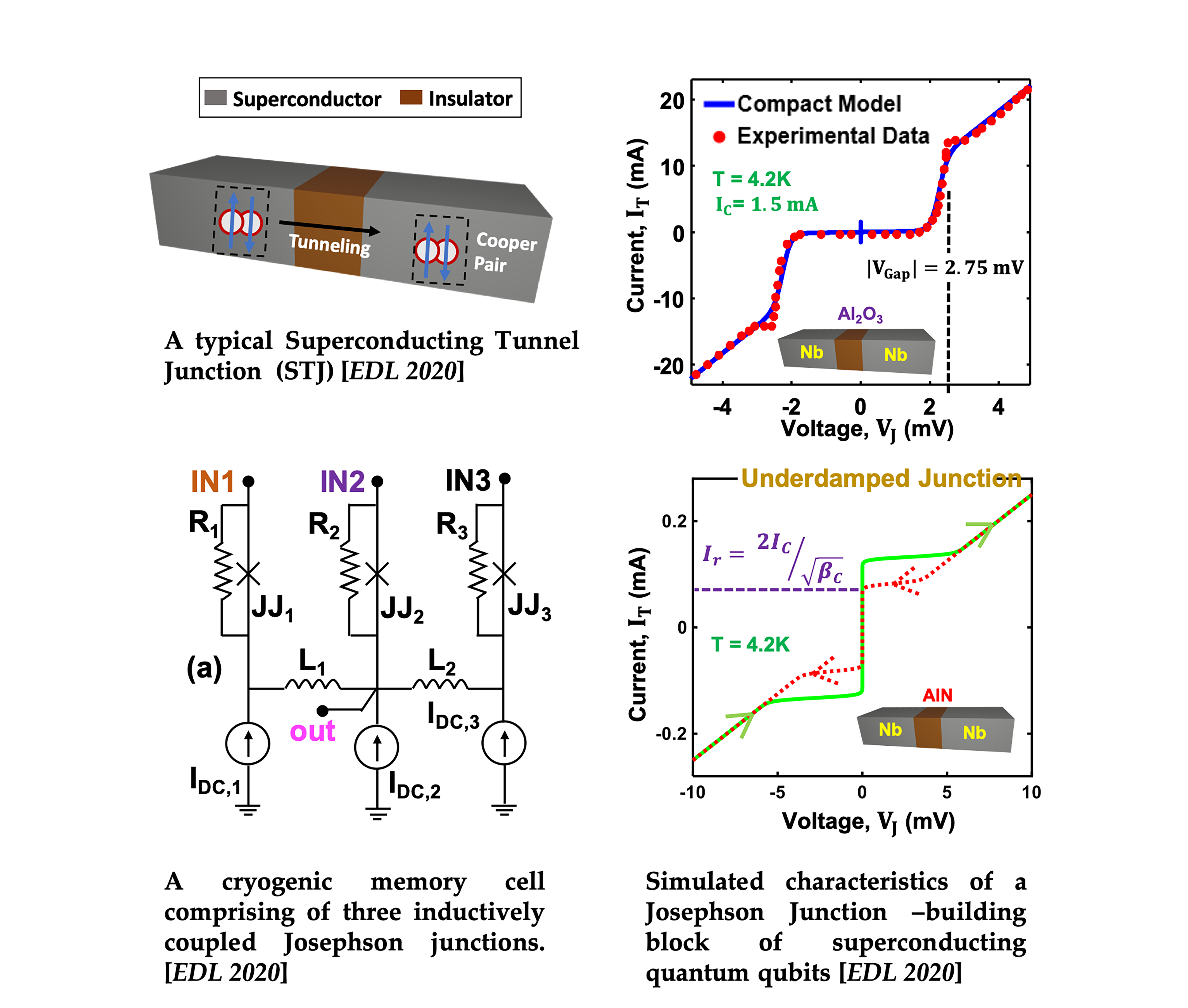
Other Areas
- Hardware security: physical unclonable functions, true random number generators
- Analog and Peripheral circuits: Low power rectifiers, sense amplifiers
- Nanoelectronic reliability: Negative bias temperature instability, time-dependent dielectric breakdown, hot carrier injection, radiation, etc.
